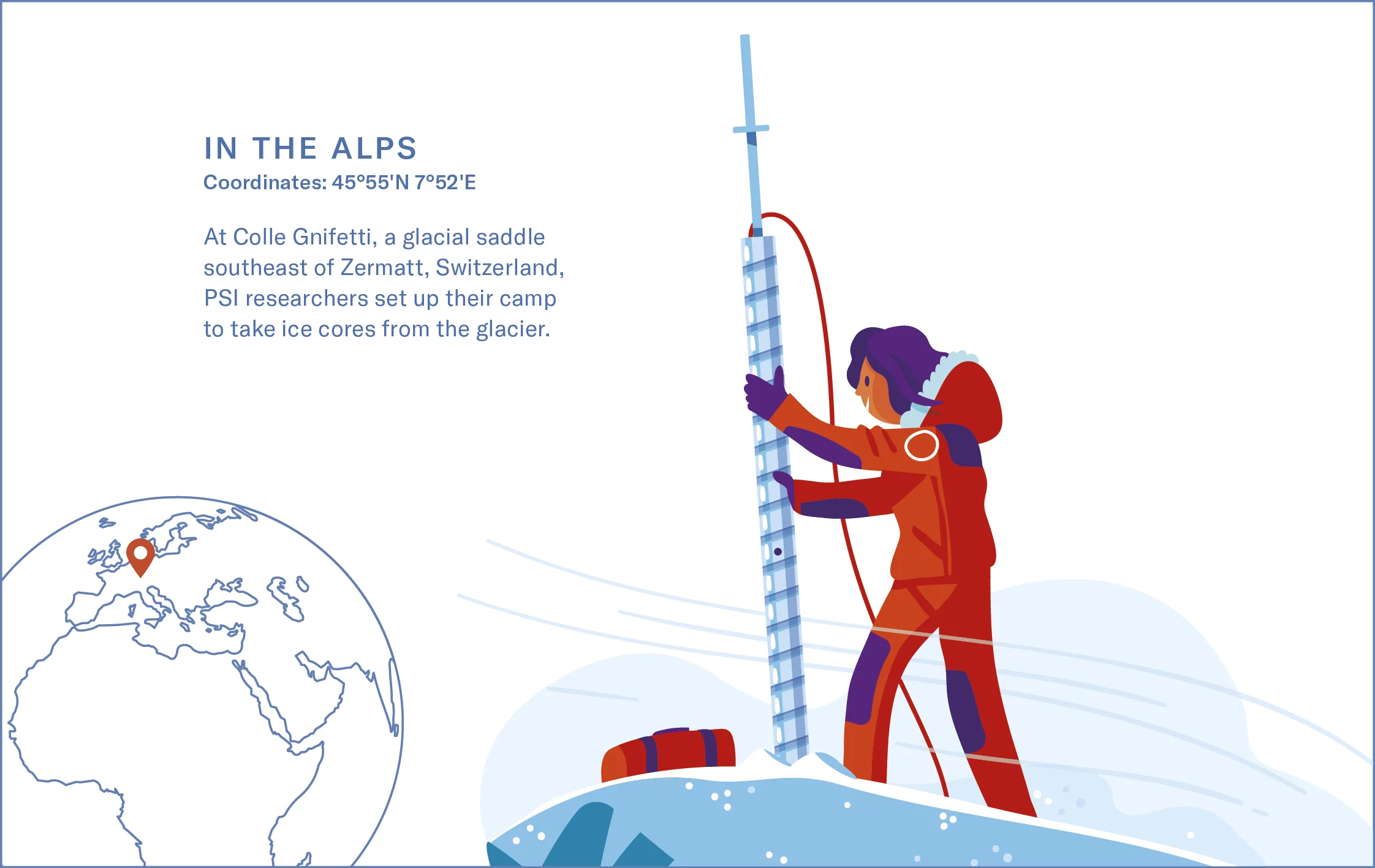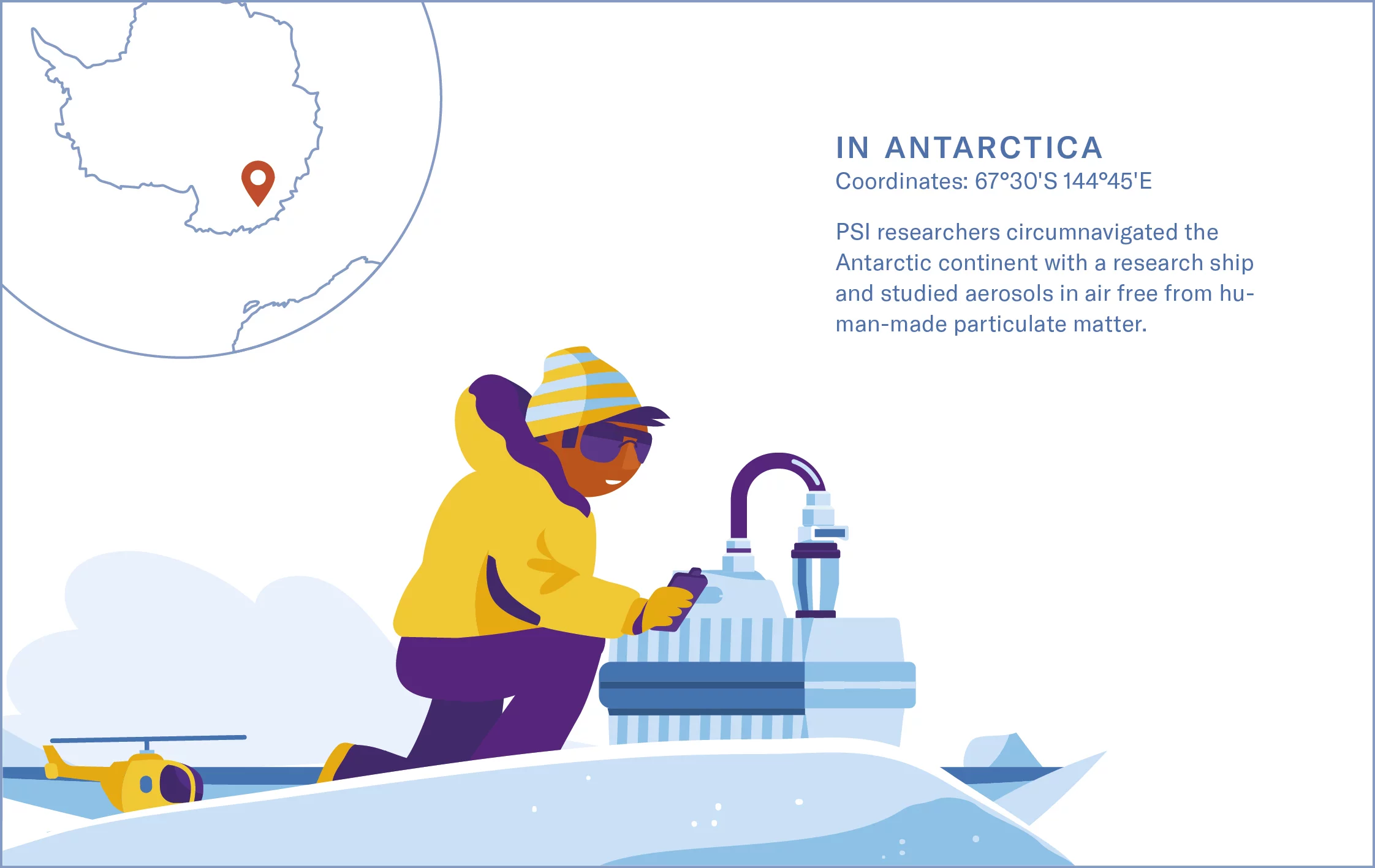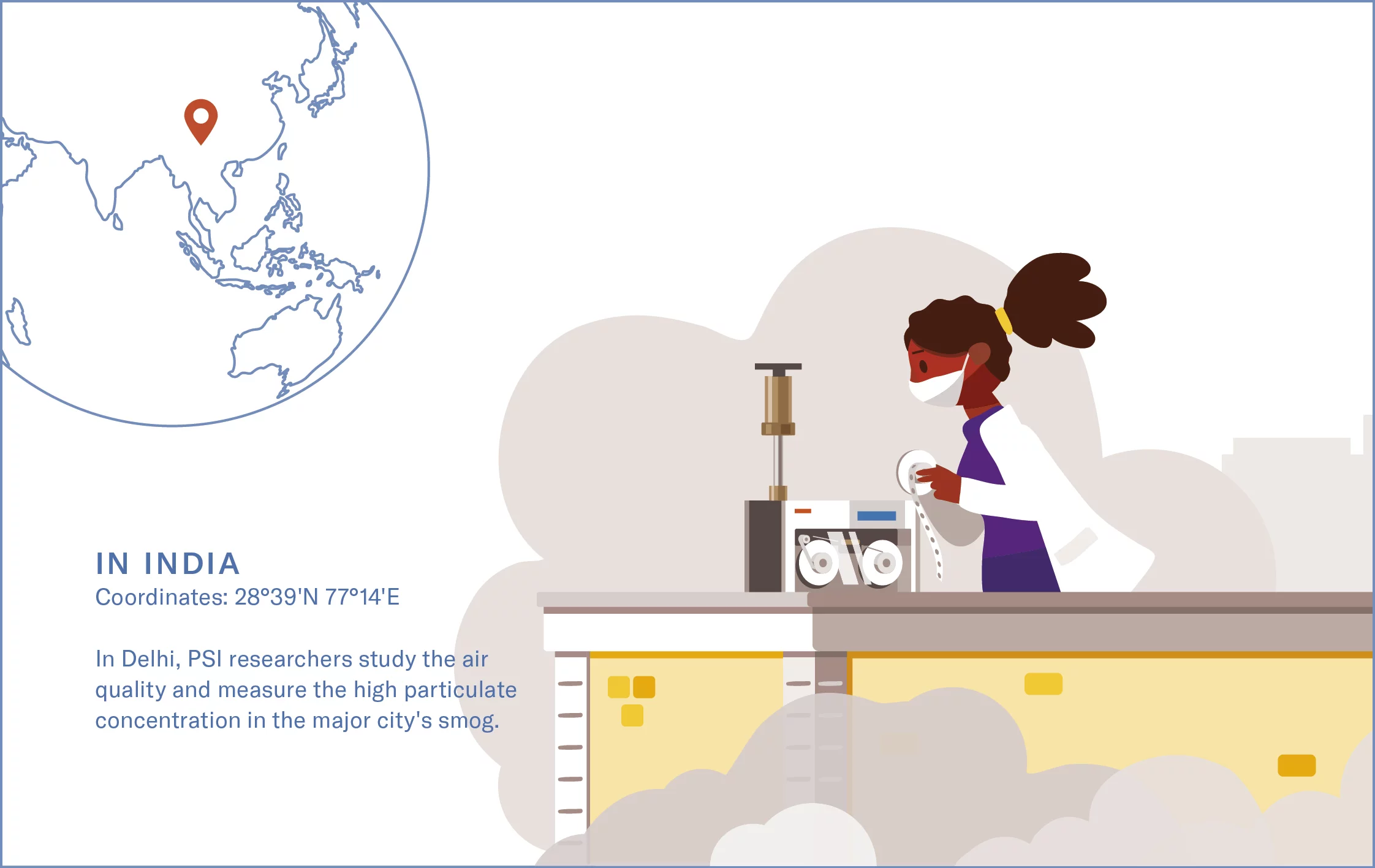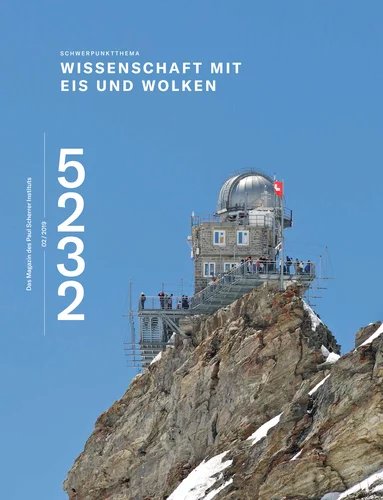PSI researchers drill through millennia-old glacier ice and analyse the world's highest particulate concentrations in Delhi, India. They are helping to address global questions regarding climate change and to reduce air pollution.
"Yes, our research is very adventurous", Margit Schwikowski admits. The PSI researcher journeys with her team and a ton of material to high-altitude glaciers all over the world to extract drill cores from the ice. The centuries-old glacier ice sheds light on what happened on Earth in the past. In 2018, the head of the Laboratory for Environmental Chemistry spent two weeks on the 4,100-metre-high Belucha Glacier in Siberia's Altai Mountains. "We were six people from Switzerland – three women and three men – as well as two members of the Russian rescue service", says the expedition leader.
The team succeeded in using their equipment to drill all the way down to the bedrock and extract a 160-metre-long ice core. The glacier ice acts as a natural archive, since with every snowfall also airborne dust particles are deposited. The deeper you drill, the farther back you are looking into the past. "I suspect that this new ice core will allow us to look back up to 10,000 years", Schwikowski says. "The deepest ice in particular has been thinned out by the pressure and the time – there the deposits of centuries lie just a few centimetres above each other."
To determine the age of the ice, the PSI researchers measure organic particulates present in the core using so-called radiocarbon dating, which otherwise is used mainly in archaeology and palaeontology. They are able to do this with just tiny amounts of carbon. "We developed this method for ice dating and are still the only ones in the world who can do it", the chemist says proudly. "That's why we get samples of ice from all over the world."
Already in 2001, the research group had taken a shorter ice core from the Belucha Glacier, which reached back 750 years and delivered a wealth of results. On the basis of the composition of the water molecules, the researchers were able to reconstruct variations in the regional temperature over time. They showed – in agreement with global studies of climate warming – that differences in solar activity could explain fluctuations in the pre-industrial era, but not the sharp increase in temperature after 1850.
Silver for Catherine the Great
In addition to providing climate information, the ice allows further historical insights: Thus the researchers were able to prove, from the ice of Belucha, that silver mining polluted the atmosphere beginning in 1770. At the time, Catherine the Great ruled Russia. The silver extracted in the Altai region was used to make Russian coins.
In the meantime, the ice from the drilling in 2001 has been almost used up, and the researchers are looking forward to studying the new material. The eight-centimetre-thick ice core was divided up into segments 70 centimetres long, distributed among 15 insulated cases. The ice made its way to Switzerland by helicopter, refrigeration truck, and airplane. "We had to make sure that nothing got stuck in customs", Schwikowski says of the precious cargo. "For me, as a trace analyst, ice is a supermaterial", she says enthusiastically. "But now the glaciers are disappearing dramatically, and with them our research object as well." That's why Schwikowski is participating in an initiative called "Ice Memory", which is supported by the UNESCO. Ice cores from high alpine glaciers all over the world are to be stored in Antarctica and thus preserved for future generations.
Ice surface in X-ray light
Ice and snow are also research objects for the research group for surface chemistry, also situated with Schwikowski in the Laboratory for Environmental Chemistry. More precisely, this group deals with the chemical and physical properties of the upper crystal layers on ice. Using X-ray light from the Swiss Light Source SLS at PSI, the researchers determine the structure and composition of the topmost ten nanometres (millionths of a millimetre) of ice surfaces. The team wants to find out, among other things, how gases and particulates are stored in the ice, which in turn is relevant for the analysis of ice cores. It is also important to understand how these substances influence the climate-relevant albedo of the snow surface and chemical reactions in the atmosphere. "Our results flow into data banks that form the actual knowledge base on which the climate models rest", explains research group leader Markus Ammann.
Aerosols influence the climate
What effects do the airborne particles, also called aerosols or particulate matter, have on the climate and our health? This too is being investigated by the researchers at the PSI Laboratory for Atmospheric Chemistry. "Aerosols influence the climate in various ways", says laboratory head Urs Baltensperger. The particles have many different origins; soot particles from combustion as well as salt crystals from the ocean are among the aerosols. There are solid and liquid aerosols, and they come in many different sizes. Accordingly, they initiate different processes in the atmosphere. Some absorb sunlight, thereby heat up and thus contribute to the warming of the atmosphere. Others scatter the light back into space and thus have a cooling effect. In addition, cloud droplets form on aerosol particles. "The more aerosols, the more and the whiter the clouds", Baltensperger says. Clouds too make the climate cooler, as they shield the sun's rays.
To study the influence of natural aerosols on cloud formation in a setting completely free from the effects of human-made particulates, the researchers need to travel to remote locations. "Today, we can only find completely clean air in the polar regions", says Julia Schmale, head of the research group for molecular cluster and particle processes in Urs Baltensperger's laboratory. So she and her colleagues take part in international expeditions: Two years ago, she circumnavigated Antarctica with an icebreaker; the Swiss Polar Institute, which is hosted by EPFL, had organised this expedition. In summer 2018, on the other hand, Schmale and her colleagues went to the Arctic, where several research groups shared one ship as a "floating laboratory".
In addition to studying the effects of aerosols, other researchers in Baltensperger's laboratory are also investigating the origin of the airborne particles. Around half of them come from so-called primary sources, whether from internal combustion engines or from nature. Soot, debris abraded from automobile tyres, mineral dust, and sea salt are among them. The other half is only formed in the atmosphere, when certain gases form chemical compounds. In this context, quite a stir was caused by three 2016 publications in which Baltensperger's research groups were involved: The researchers showed that to large extent organic compounds from nature also give rise to new aerosols in the atmosphere. "We found out that the aromatic substances that rise up out of the forests react with ozone, among other things, in the atmosphere and thus form new aerosols", Baltensperger explains. The experiments were carried out in the specially constructed so-called CLOUD chamber at CERN near Geneva. Measurements on the Jungfraujoch confirm that this process likewise occurs in nature. "Since then, it has become clear that this contribution must be taken into account in the climate models", Baltensperger says.
Yet it is not only with regard to the climate that aerosols play an important role – particulate matter also has a substantial impact on human health. It is estimated that seven million people worldwide die prematurely from the effects of polluted air. That is why André Prévôt and his research group are currently studying the air quality in Delhi, India. There they measure concentrations of pollutants 20 to 30 times higher than in Switzerland, mainly from human sources. With their instruments and analyses, Prévôt and his team can reveal which sources and processes produce how much particulate matter, and what measures can be taken to improve the situation.
Chinese furnace in the smog chamber
"We have the responsibility to apply our knowledge to improve the quality of life throughout the world, and it would fulfill a great personal goal of mine if our results could contribute to improving the air quality in India", Prévôt says. This has already been achieved in China. The PSI researchers were able to show that the smog in Beijing consists to a large extent of secondarily formed particulate matter, to which also distant sources contribute. In addition to making on-site measurements, the group carried out experiments in the smog chamber at PSI. "We imported a Chinese furnace, complete with coal, and investigated what happens to the exhaust fumes in the atmosphere", explains the atmospheric scientist. These findings contributed to the Beijing government's decision to ban coal heating in the city and to shut down a number of plants within a radius of 500 kilometres. This led to a reduction of pollutant concentrations of up to 25 percent in just five years.
For their smog measurements, the researchers built a mobile laboratory in which they could analyse the composition of the particulate matter on-site. In the meantime, they have developed a new device with which they can follow, among other things, reactions that take place in the aerosol particles and that can have an effect on health. "This opens up a complex research field for us with new, highly relevant questions", says Urs Baltensperger. "That's fun and very satisfying for us researchers."
Text: Barbara Vonarburg




